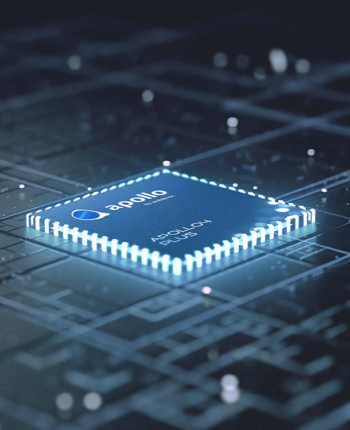
SleepKit is really an AI Development Package (ADK) that permits developers to easily build and deploy serious-time snooze-monitoring models on Ambiq's family of ultra-small power SoCs. SleepKit explores quite a few sleep similar jobs which includes snooze staging, and rest apnea detection. The kit incorporates various datasets, attribute sets, effective model architectures, and many pre-experienced models. The objective of the models should be to outperform typical, hand-crafted algorithms with effective AI models that still in good shape within the stringent useful resource constraints of embedded gadgets.
Prompt: A gorgeously rendered papercraft environment of the coral reef, rife with vibrant fish and sea creatures.
When using Jlink to debug, prints are usually emitted to either the SWO interface or the UART interface, each of that has power implications. Deciding on which interface to employ is straighforward:
far more Prompt: Animated scene features a close-up of a brief fluffy monster kneeling beside a melting red candle. The art type is 3D and reasonable, with a focus on lights and texture. The mood in the painting is among surprise and curiosity, as the monster gazes within the flame with extensive eyes and open mouth.
“We thought we would have liked a whole new idea, but we acquired there just by scale,” reported Jared Kaplan, a researcher at OpenAI and among the designers of GPT-three, inside a panel dialogue in December at NeurIPS, a leading AI conference.
Each application and model differs. TFLM's non-deterministic Electricity effectiveness compounds the situation - the one way to find out if a specific list of optimization knobs options operates is to test them.
SleepKit supplies a variety of modes that can be invoked to get a provided process. These modes is often accessed by using the CLI or directly within the Python package.
Prompt: This shut-up shot of the chameleon showcases its striking colour modifying capabilities. The track record is blurred, drawing focus on the animal’s placing appearance.
Our website takes advantage of cookies Our website use cookies. By continuing navigating, we believe your permission to deploy cookies as in depth in our Privateness Coverage.
a lot more Prompt: Intense pack up of a 24 calendar year outdated girl’s eye blinking, standing in Marrakech in the course of magic hour, cinematic film shot in 70mm, depth of industry, vivid shades, cinematic
Prompt: Aerial check out of Santorini through the blue hour, showcasing the spectacular architecture of white Cycladic structures with blue domes. The caldera sights are spectacular, along with the lights results in a good looking, serene environment.
additional Prompt: A gorgeously rendered papercraft earth of the coral reef, rife with colourful fish and sea creatures.
It can be tempting to concentrate on optimizing inference: it can be compute, memory, and Vitality intense, and an extremely obvious 'optimization target'. From the context of overall system optimization, even so, inference is usually a small slice of In general power consumption.
Consumer Effort: Enable it to be effortless for customers to find the knowledge they want. Person-helpful interfaces and distinct interaction are essential.
Accelerating the Development of Optimized AI Features with Ambiq’s neuralSPOT
Ambiq’s neuralSPOT® is an open-source AI developer-focused SDK designed for our latest Apollo4 Plus system-on-chip (SoC) family. neuralSPOT provides an on-ramp to the rapid development of AI features for our customers’ AI applications and products. Included with neuralSPOT are Ambiq-optimized libraries, tools, and examples to help jumpstart AI-focused applications.
UNDERSTANDING NEURALSPOT VIA THE BASIC TENSORFLOW EXAMPLE
Often, the best way to ramp up on a new software library is through a comprehensive example – this is why neuralSPOt includes basic_tf_stub, an illustrative example that leverages many of neuralSPOT’s features.
In this article, we walk through the example block-by-block, using it as a guide to building AI features using neuralSPOT.
Ambiq's Vice President of Artificial Intelligence, Carlos Morales, went on CNBC Street Signs Asia to discuss the power Cool wearable tech consumption of AI and trends in endpoint devices.
Since 2010, Ambiq has been a leader in ultra-low power semiconductors that enable endpoint devices with more data-driven and AI-capable features while dropping the energy requirements up to 10X lower. They do this with the patented Subthreshold Power Optimized Technology (SPOT ®) platform.
Computer inferencing is complex, and for endpoint AI to become practical, these devices have to drop from megawatts of power to microwatts. This is where Ambiq has the power to change industries such as healthcare, agriculture, and Industrial IoT.
Ambiq Designs Low-Power for Next Gen Endpoint Devices
Ambiq’s VP of Architecture and Product Planning, Dan Cermak, joins the ipXchange team at CES to discuss how manufacturers can improve their products with ultra-low power. As technology becomes more sophisticated, energy consumption continues to grow. Here Dan outlines how Ambiq stays ahead of the curve by planning for energy requirements 5 years in advance.
Ambiq’s VP of Architecture and Product Planning at Embedded World 2024
Ambiq specializes in ultra-low-power SoC's designed to make intelligent battery-powered endpoint solutions a reality. These days, just Ambiq apollo 3 about every endpoint device incorporates AI features, including anomaly detection, speech-driven user interfaces, audio event detection and classification, and health monitoring.
Ambiq's ultra low power, high-performance platforms are ideal for implementing this class of AI features, and we at Ambiq are dedicated to making implementation as easy as possible by offering open-source developer-centric toolkits, software libraries, and reference models to accelerate AI feature development.

NEURALSPOT - BECAUSE AI IS HARD ENOUGH
neuralSPOT is an AI developer-focused SDK in the true sense of the word: it includes everything you need to get your AI model onto Ambiq’s platform. You’ll find libraries for talking to sensors, managing SoC peripherals, and controlling power and memory configurations, along with tools for easily debugging your model from your laptop or PC, and examples that tie it all together.
Facebook | Linkedin | Twitter | YouTube